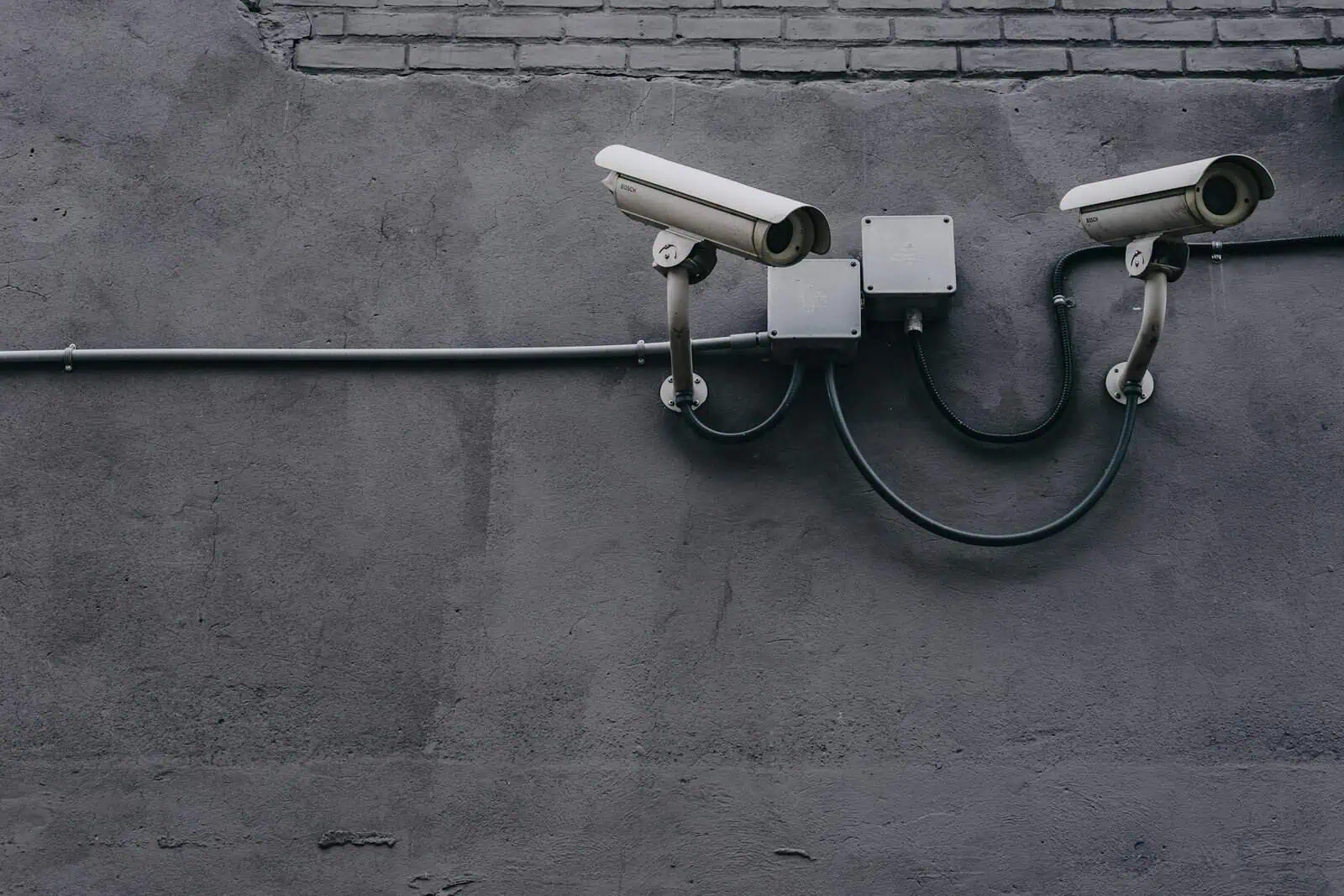Photo by Scott Webb on Unsplash
Security equipment is crucial in keeping homes and offices safe. Tools like cameras and alarms help protect you from dangers. They work their best when they’re in proper condition and used the right way.
Maintaining security tools means checking them often and fixing any incoming issues. Also, it’s important for people who use them to feel they can count on these tools.
We’ll look at how to approach this matter – from picking strong passwords to teaching your team what to do if something goes wrong. Keeping up with new text and rules is part of the deal too.
Staying safe isn’t just a one-time effort; it needs constant attention. Let’s dive in.
Enhancing quality control in security equipment

Photo by Christina @ wocintechchat.com on Unsplash
Making sure your security equipment works well is imperative in keeping your processes safe and earning the trust of those who use it. Here are the three main approaches to enhancing the quality of your equipment:
1. Guaranteeing safety and reliability
Safety and reliability in security equipment are not just goals; they’re must-haves. You rely on motion sensors, alarms, and access control systems to protect what’s important. Making sure these tools work right every time is crucial.
Threats change quickly, and your security gear needs to stay ahead. It’s all about having strong encryption for data protection and robust cybersecurity policies that you update often.
This means regular checks to keep everything running without a hitch.
If something does go wrong, having a plan for a quick response keeps everyone safer. Regular training for the team ensures they know how to use all equipment correctly and can spot issues before they become bigger headaches.
The role of PCB manufacturing in security equipment
Internal components are equally important as external design when it comes to building reliable security systems. At the core of every security device is a printed circuit board. These boards are the backbone of your technology, carrying all the electrical connections that allow your devices to function.
A high-quality PCB manufacturing service will help deliver dependable security solutions. A well-built PCB ensures smooth running for all your devices and minimises the possibility of failures that can compromise safety. You can ensure your equipment performs to high standards by partnering with experienced PCB manufacturers.
2. Compliance with security regulations
Ensuring safety and reliability sets the stage for the next crucial step: following security regulations. Meeting these standards keeps your equipment on track. You need to understand and apply rules that govern security gear.
Think federal laws, local guidelines, and industry benchmarks – each demanding attention.
You dive deep into specifics like IT and OT security protocols. This means scrutinising how data is protected and ensuring access control systems are up to par. But it’s not just about ticking boxes; it’s making sure everything from motion sensors to alarms passes control.
Following these rules does more than keep you compliant – it builds trust with users who rely on your equipment to stay safe.
Strategies for implementing quality control in security management

Photo by LinkedIn Sales Solutions on Unsplash
Quality control of your security equipment ensures its effectiveness, reliability, and safety. The three most important strategies are:
1. Conducting risk assessments and management
You need to check your security equipment often. Think about what could go wrong and how likely it is to happen. This step helps you understand the risks. Then, decide what steps to take to lower those risks.
Make sure your alarms, motion sensors, access control systems, and other gear can face threats without breaking down.
Also, managing risks isn’t a one-time job; it’s ongoing. You should update your plans as new threats appear or as you get new technology. This means always being ready to change how you protect yourself and your belongings based on the latest info about dangers and security tools.
2. Strengthening encryption and data protection
To make your security equipment tough, boosting encryption and data protection is a must-do. Think of encryption as a secret code that keeps hackers out of your digital conversations.
It scrambles your data so only the people you want can read it. Now, with more bad actors moving online, this secret code needs to be super strong to guard against sneaky attacks.
In comes robust cybersecurity policies – a game plan for keeping malicious individuals at bay. By having clear rules on who gets access to what, you reduce the chances of someone slipping through the cracks.
Authentication measures ensure that only verified users can get in. It’s something like a VIP pass; if you don’t have one – no entry for you! This way your information stays safe and sound, whether it’s about protecting emails or securing chats from prying eyes.
3. Developing robust cybersecurity policies
You need to focus on crafting tough cybersecurity rules as your shield against cyber threats, keeping your data safe.
To make these policies work well, first understand the risks your system faces. Then, lay down clear rules on who can access what information and when.
Make sure everyone in your company knows these policies inside out. Training is a must so that they can spot dangers and act correctly under pressure. Regular updates keep these policies fresh and effective against new threats.
This ongoing effort helps protect against data breaches, ensuring security equipment meets top standards for safety and reliability.
Addressing challenges in security equipment excellence
Making security equipment better comes with some obstacles along the way. You need to keep learning about safety and have plans ready for when something doesn’t go according to plan. We’ve listed the three best ways to fight these challenges.
1. Advancing security training and culture
You need to boost security training and build a strong culture around it. This involves teaching your team about the latest in physical security measures, IT, and OT security. It’s not just about knowing how to use motion sensors or alarms.
Your crew must understand risk management and how to react in unwanted situations. Prepare them for everything from stopping hackers with fancy tech to spotting odd behaviours that could mean trouble.
Creating a culture where every person feels responsible for security makes a huge difference. Encourage questions and share successful threat stoppages – even small wins help! Regular drills on incident response keep everyone sharp.
Remember, good habits form when people see their leaders taking these practices seriously day in, and day out.
2. Planning for incident response
Planning for incident response means being ready before anything goes downhill. It involves setting up a team that knows exactly what to do if there’s an attack or breach.
This crew has roles clear as day and steps to follow, so no time is wasted guessing during a crisis.
You outline every possible threat, from hackers to hardware failures, and map out how to tackle them fast and effectively. Regular practice runs ensure everyone stays sharp. Tools are in place so you can spot trouble early and act swiftly to minimise damage.
3. Performing security monitoring and compliance audits
Keeping a close eye on your security systems is essential. You need to regularly check cameras, alarms, and access controls to make sure everything’s working right. This is where monitoring comes into play.
It helps catch issues before they turn big. Also, performing compliance audits ensures you meet all the rules for safety and data protection. These checks might seem like extra work, but they’re crucial for keeping threats away and making sure your gear does its job well.
Staying updated with security technology and vendor changes
To keep your security flawless. It’s crucial to always know the latest tech and updates from vendors. This means getting new gadgets when they come out and understanding how changes can affect your safety game.
Adapting to new security technologies
Security equipment gets better every day. New gadgets and systems come out, helping you stay safe. Think smart cameras that see in the dark or alarms that talk to your phone. It’s like a race – as new tools pop up, bad guys find ways around them. So you have to keep learning and using the new security technologies.
You also need to work with companies that make these innovative tools. They know their gear best and can teach you how to use it right. And when something new hits the market? Dive in, test it, twist it, turn it upside down.
Make sure it does what you need and keeps you ahead of threats. After all, staying safe means staying one step ahead – always ready for what’s next without getting left behind by old tech.
Vigilance and adaptability as core principles
Making sure your security gear is top-notch matters a lot. You’ve got to keep an eye out for new tech and updates from suppliers. Learning and adjusting are part of the journey. This way, you keep everyone safe, and trust in your services stays strong.
Staying sharp and flexible is your best bet for keeping threats at bay.

